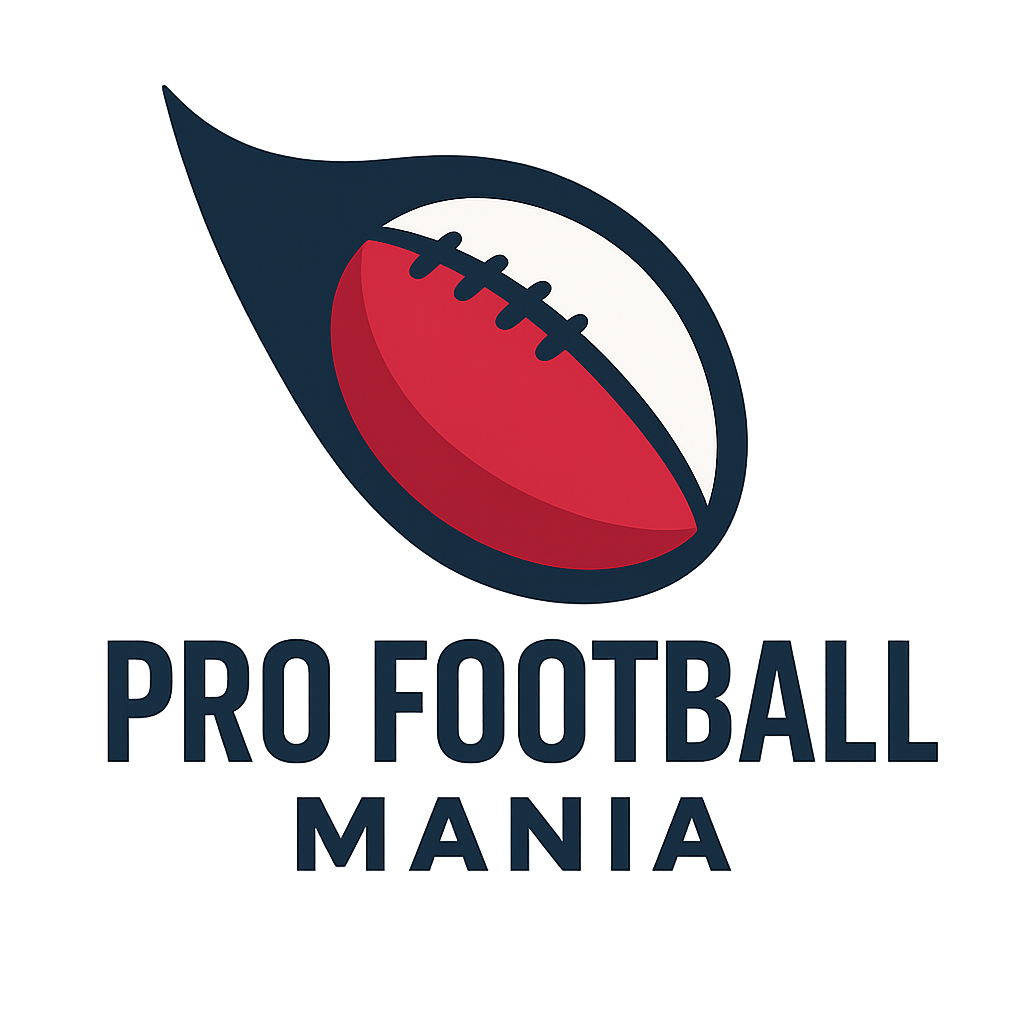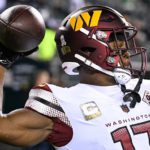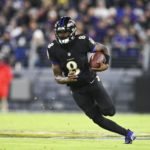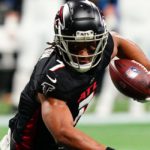What happened to Legion of Boom?
By: Brady Atkins
Decades can feel like eternities in the context of professional sports– but it was not long ago when the Miami Heat defeated the Durant/Westbrook/Harden Oklahoma City Thunder in the NBA Finals, Johnny Manziel became a Heisman Trophy winner, and the Seattle Seahawks cobbled together what just might be the greatest draft class in NFL History.
The 2012 NFL Draft, unbeknownst to anyone at the time, would hold the missing pieces for a Seattle Seahawks franchise that was about to become a powerhouse, building off of the success they had established in years past, once Pete Carroll became the Seahawks’ head coach.
Carroll’s first season as Seattle’s guiding hand was 2010, one where two first-round picks within the top 15 would prove to turn to gold over the years, with the pro bowl tackle Russell Okung being selected sixth overall, and the three-time All-Pro safety Earl Thomas falling to 14th for the Seahawks.
Along with Okung and Thomas, the Seahawks brought another Pro Bowler in Golden Tate, the second-round wide receiver, and yet another Pro Bowler in Kam Chancellor, the fifth-round safety. Joining that star-studded 2010 class would be a group in 2011 including James Carpenter, a 10-year starting guard in the league, and the Day Three selections of longtime Seahawk KJ Wright in the fourth round, and the three-time All-Pro Richard Sherman in the fifth.
But for as many stars and starters were selected in Carroll’s first two draft classes, they would prove to be just the foundation for a 2012 group that took the Seahawks from being a tough out to a top-tier Super Bowl contender. Bruce Irvin, the team’s first-round pick and nine-year NFL starter, was just the cherry on top of a remarkable class loaded round to round with diamonds in the rough.
Finding Bobby Wagner, a six-time All-Pro player at middle linebacker, all the way in the middle of the second round, would go down as the win of the century for most teams– as would finding JR Sweezy, a reliable starting guard, at the tail end of the seventh round. But it would be Seattle’s third-round selection, the undersized, inexperienced quarterback out of Wisconsin, that would be the biggest difference-maker. Russell Wilson, fresh off a season with early-year MVP buzz and one of seven career Pro Bowl appearances, is what proved to take Seattle over the top.
Since going 7-9 twice in his first two NFL seasons, Carroll’s Seahawks have not experienced a season below .500 since 2011. On route to their decade of success, Seattle hasn’t overachieved, but coasted on the success of those star-studded draft classes, hauling in a group of players that have combined for 12 All-Pro teams and 34 Pro Bowls over the course of their careers.
It’s the gems where Seattle has typically shined as well, of those 12 All-Pro teams, none of the appearances came from either of the Seahawks’ three first-round picks. And of their 34 combined Pro Bowls, just two were from those first-round selections. Through the early 2010s, Seattle had built a Super Bowl-caliber roster on the starting-caliber play of their early-round picks, and the surprise star power of their late-round selections. And through that success, with an elite roster assembled on rookie contracts, the Seahawks thrived to the tune of two NFC Championships and one dominant Super Bowl victory in Carroll’s first five seasons with the franchise.
All was well in Seattle, even after their 2014 Super Bowl loss. Because even while the team fell just short of their ultimate goal, a track record of established draft dominance through the Carroll tenure shows that this Seahawks franchise isn’t one set to rebuild, but reload via talented defensive stars and reliable offensive talent overlooked by the other 31 teams nowhere near as reliable as the Seahawks.
That was the idea, anyway.
The Beginning of the End
Of course, not everything always goes according to plan. Patterns eventually break, and empires eventually collapse– even one as consistently beautiful as what the Seahawks had done in their drafts through the early Carroll years.
The selections of Okung, Tate, and Wilson on the offensive side of the ball are success stories, but the success found on defense, where All-Pro talent found past the first round is few and far between, Seattle thrived for three consecutive years. Among active NFL players, only 26 have been voted as first-team All-Pros three or more times. The Seahawks drafted three of them, more than any other team but the Patriots, who also drafted three. However, among those 26 with three or more All-Pro appearances– only 10 are defensive players. Seattle has drafted 30% of the league’s active three-time All-Pro defenders.
But even with the Seahawks’ established success, even with all the playoff appearances and 10-win seasons, the franchise has stagnated in recent seasons. Always being good enough to make noise in the postseason, but never good enough to make it past the divisional round of the playoffs. That NFC Championship they won in 2014 was the last time Seattle made it as far as the NFL semifinals.
The question of how the Seahawks fell into the pit of frustrating “almost eliteness” is an easy one. Their draft classes, for as established a pedigree as they once had, have fallen off. Not every year can be a 2012 filled with Wilson’s and Wagner’s, or even a 2011 filled with Wright’s and Sherman’s. But a franchise that used to pluck talent out of thin air suddenly”¦ stopped.
In fact, that 2012 class might have been the last truly great draft the Seahawks have had since Carroll took over. Following that draft, the Seahawks hauled in a 2013 class where only two of their 11 selected players are still in the league, Spencer Ware and Luke Wilson. Ware, a two-time Super Bowl-winning running back, hasn’t seen the field since 2019, and spent last season on the Bears’ practice squad, while Wilson, a tight end, hasn’t had a season with more than 20 catches since 2014.
The following season served as a step in the right direction, but failed in bringing certifiable star power into the league. Paul Richardson, Justin Britt, Cassius Marsh and Kevin Pierre-Louis remain as the only members of a nine-person draft class to still be in the league. Between them, a combined zero Pro Bowl appearances, while three of the four haven’t played a snap for Seattle since 2017.
Even with a bounce-back 2015 class, one that included Frank Clark, Tyler Lockett, Mark Glowinski, and Tye Smith as standout selections after the first round, the Seahawks struggled to turn that success into momentum– turning in a 10 person 2016 draft class with just one player, the fifth-round running back Alex Collins, still standing as active Seahawks roster members.
2016 would prove to set the trend for Seattle. Some singles, the very occasional home run, and a lot of strikeouts. After a combined 34 Pro Bowl’s from their draft classes in 2010, 2011 and 2012, every subsequent Seahawks’ draft has made up a combined six Pro Bowl appearances, with no Pro Bowl players coming from the 2013, 2014 and 2016 draft classes. The only player from that group to make more than one, Frank Clark, made them both with a different team.
And it’s not that the Seahawks are simply failing in the late rounds, an area they once dominated. They’re falling short in the early rounds as well. Not even falling short of selecting solid starters, but falling short of selecting starters at all.
Jordyn Brooks, the Seahawks’ first-round pick from 2020, played for the team on just 32% of his team’s defensive snaps– fewer than all but four first-round rookies. To take it further, Seattle hasn’t had a first-round pick log a single season while on the field for half of their unit’s snaps since Germain Ifedi in 2016, who spent only the duration of his rookie contract with the Seahawks.
Issues on draft day have been plaguing the Seattle Seahawks for nearly a decade, after once standing as the pinnacle for draft excellence. After three all-time great draft classes, one after the other, the Seahawks have been forced to rely on those past successes with few instances of an influx of talent. That’s how the Seahawks got here.
But the matter of why the Seahawks got here is a little more complicated.
You ever wonder why we’re here?
In more than a few ways, the Seattle Seahawks are the model of consistency.
With the seventh-longest tenured general manager in John Schneider and the fifth-longest tenured head coach in Pete Carroll, the Seattle front office has had the same two heads running the ship for over a decade.
Even the Seahawks quarterback situation has been the model of consistency. With Russell Wilson entering what will be his 10th season with Seattle in 2021, only three active quarterbacks have spent more time with their current NFL teams, and one of them, Green Bay’s Aaron Rodgers, might not be long for that list.
From the front office to the sidelines to the field, not many franchises have stayed as stable as the Seattle Seahawks– for better and worse. But while the three poster boys of the Seahawks’ operation have been the same since 2012, the faces behind the scenes have changed roles and left the team altogether.
Scott Fitterer, the Carolina Panthers current general manager, spent two decades with the Seahawks organization– overseeing their 2010 draft class in his final year as Seattle’s area scout, and being a key part of the 2011 and 2012 drafts as the Director of College Scouting. Fitterer wasn’t long for that role, however, and was promoted to Seattle’s Co-Director of Player Personnel following the 2014 season– a job that has less to do with scouting college players, and more to do with managing active NFL guys.
Fitterer, a man worthy enough of a general manager position, was moved out of a draft-focused role just around the time the Seattle draft classes began to slip– but he’s not the only one.
John Idzik, who joined the Seattle Seahawks in 2007– is himself, no longer with the franchise. After serving the role of Vice President of Football Administration for the 2010, 2011, and 2012 classes– Idzik himself earned a promotion to the role of General Manager for the New York Jets.
Scot McCloughan became a member of the Seahawks in 2010 as the team’s Senior Personnel Executive, leaving in 2012 after being a key member of the ”˜Golden Three’ draft classes and being promoted, like Fitterer and Idzik, to General Manager of a different NFL franchise.
The general manager careers of both Idzik and McCloughan were short-lived, but regardless, both men, as well as Fitterer, served key scouting roles in the early 2010s, earned promotions for the team success built off of those early draft classes, and left the organization or moved to different roles as the draft dark ages began.
Football is, to put it mildly, hard. Those who are good at it, those who know what they’re doing, aren’t long for smaller roles. Any ounce of talent or resume shine that stands above the crowd will attract suitors away from your old role, and into a new one with a new franchise. It happened for the Seattle Seahawks– the curse of their unsustainable success.
What now?
Not all hope is lost for the Seattle Seahawks draft room, of course. In fact, Seattle has struck late-round gold a few times in recent seasons, selecting cornerback Shaquill Griffin in the third round in 2017, and selecting running back Chris Carson four rounds later the same year. And of course, at the absolute end of the 2019 draft, after the selection of wide receivers like Andy Isabella, Mecole Hardman, and JJ Arcega-Whiteside before him– Seattle took DK Metcalf 64th overall– who has already proven to be a star in the league in just two seasons.
But where those gems used to be a frequent occurrence for the Seahawks, they’re now few and far between. And in 2021, Seattle entered the draft in a decidedly un-Seattle fashion; with just three draft picks.
From 2010 to 2020, the Seahawks employed the ”˜cast a wide net and hope the best’ approach to the NFL Draft, with just two of their 11 classes in that span featuring fewer than nine selections, and never fewer than eight.
In 2021, Seattle drafted just three players, the fewest selections for any team since the 2009 New York Jets. The Seahawks didn’t make a pick until the second round.
Perhaps this is a sign of the times. The Seahawks came into the NFL Draft with little ammo due in large part to an aggressive trade to secure Jamal Adams, the former Jets’ star safety. Rather than drafting All-Pro defensive talent, maybe Seattle’s new plan is to bring in established talent and use their high-end draft picks as currency.
And maybe that’s for the best. With as much trouble as the Seahawks have had drafting relative to their older classes, maybe Seattle truly needs to rely on well-documented stars rather than taking shots in the NFL Draft.
Maybe that will lead to another Super Bowl run, and another boost to their run of consistent success. Maybe this is the start of a new era for the steady Seahawks.
Maybe this is the end of the Seattle Seahawks draft empire. But even if it is, for everything they established through that shining 2012 class, this will not be the end of the Seattle Seahawks NFL relevance.





















Leave a comment